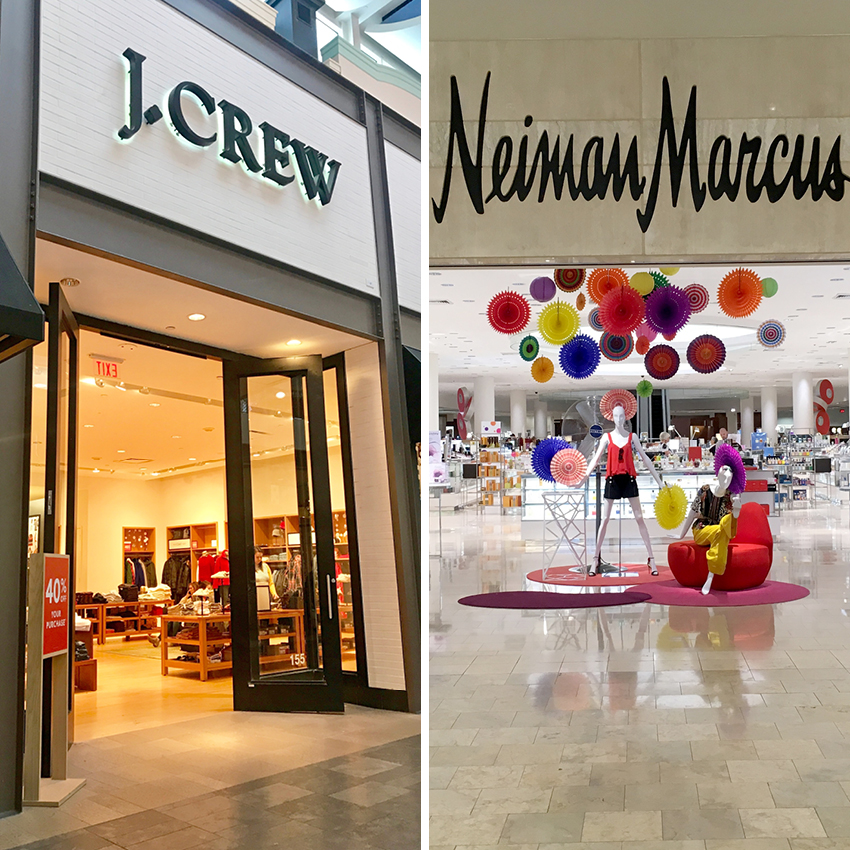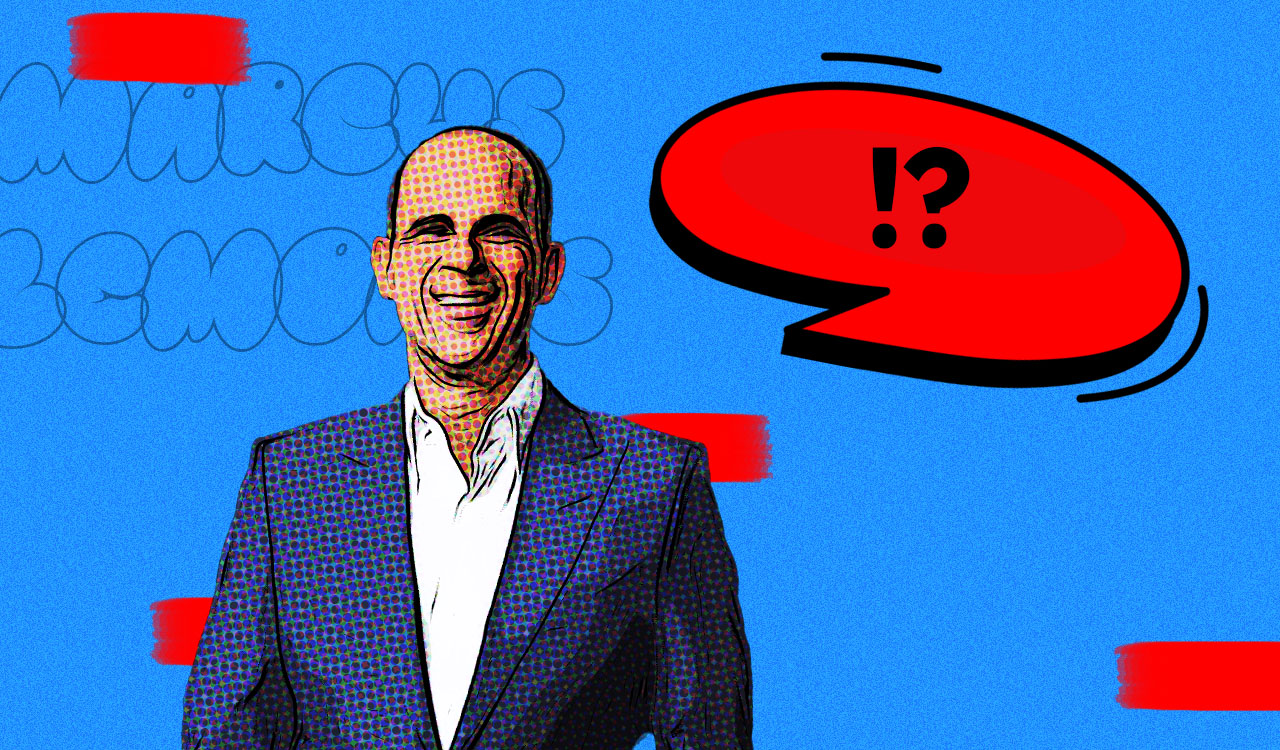The retail and general business media are jammed with news, insights and perspectives around the bankruptcies of J.Crew and Neiman Marcus. And unfortunately, too many readers could finish these articles believing that a heavy debt load combined with the shutdown due to Covid-19, were the major culprits in bringing these brands down. There are many other major factors that pushed them onto a declining curve beginning in the early to mid-2000s. So, in my opinion, they were heading to a cliff\’s edge long before the virus. It just accelerated their inevitable move to restructure.
[callout]Positioning drift usually doesn’t happen unless there is a great deal of hubris within the C-suite. In other words, “Don’t break it if it’s not broken,” or “Just keep doing more of the same, only do it better.”[/callout]
While there are a lot of kumbayas around the fact that their debt loads are being relieved and that they both have (supposedly) great plans for reopening with energized strategic directions for profitable growth, don\’t hold your breath. Unless they can both reposition their brands for the largest new generation of young consumers, armed with technology and a whole different set of cultural values. J.Crew and Neiman Marcus should have pivoted their strategies in the early 2000s, and if they don\’t transform now, they and their bailout investors will be looking down the barrel of the bankruptcy gun again. Get it guys? The J.Crew and Neiman Marcus brands drifted older along with their original core consumers. Of course, the end scenario if one continues to do that is…well, as they die; the brands die with them.
Positioning Drift and Hubris
I coined the strategic concept of \”positioning drift\” in 2014 when I wrote about the demise of A&F: Michael Jeffries, A&F Genius Rides into The Sunset. Positioning drift usually doesn\’t happen unless there is a great deal of hubris within the C-suite. In other words, \”Don\’t break it if it\’s not broken,\” or \”Just keep doing more of the same, only do it better.\” In my opinion, Michael Jeffries, then CEO of Abercrombie & Fitch, was blinded by meteoric success and did not see his adversaries stealing his consumers as his brand drifted off course.
That was Jeffries\’ Achilles heel. He drifted older along with his original young customers. He kept his focus on his aging customers without looking over his shoulder at their younger siblings, most of whom wouldn\’t be caught dead wearing their older brothers\’ and sisters\’ brand. So, when those older siblings grew out of the A&F image (sexy, young and cool), the younger siblings were finding their own zeitgeist among hundreds of compelling competitors. This positioning drift, in combination with the enormous ego of Jeffries, who believed he had discovered the \”holy grail\” of retailing, blindsided him. He didn\’t understand that he needed to evolve and reposition one of the hottest brands and retail models for two decades. He didn\’t and, A&F died.
J.Crew
J.Crew was launched as a catalogue in the 80s when it was the hot preppy brand for young boomers, a little above Gap and a bit below Ralph Lauren. Their first store launched in Manhattan in 1989. The brand began to slip during the 90s, leading to a leveraged buyout by TPG Capital in 1997.
Enter Mickey Drexler as new CEO in 2003, and along with his VP of women\’s design, Jenna Lyons, the brand took off for the next ten years, boosted by brand lover First Lady Michelle Obama.
In the early part of the 2010s, the business started to slip again due to a positioning drift, not only due to lack of focus on the emerging new generation, but also in over-designing towards a faux couture, thus losing existing customers. On top of that, quality began to be sacrificed as J.Crew got caught up in the price wars, which led to an acceleration of outlet store openings and the launch of Mercantile, which was just another version of the outlets.
So, in 2015 I wrote J.Crew Enters Danger Zone. At the end of the article, I said the brand was entering a period of schizophrenia. J.Crew, J.Crew Factory stores and website, J.Crew Mercantile – will the real J.Crew please stand up? What is the real J.Crew product? What is the real J.Crew price? What am I supposed to believe? It\’s a shell game. It\’s like abracadabra \”fast buck\” Eddie Lampert short-term tactics. Positioning drift indeed. In the long term, consumers are not stupid. And over time if they see the name J.Crew more often than not attached to lower value, J.Crew will be devalued in their minds. And to detach from the perception of lower value, the brand needs a major repositioning for a new \”young and preppy\” style and product that resonates with a new young consumer culture.
Neiman Marcus
The tsunami of change was beginning to hit the world of retailing in the early 2000s: technology and e-commerce; a multitude of new websites selling stuff, including Amazon; an increase in direct-to-consumer luxury brands and the emergence of the millennials soon to be the largest consumer cohort, weaponized with technology and a whole new set of values and a new definition of value. All of this was jamming an already over-competed, over-stored ecosystem, driving all retail sectors scrambling for growth to grab onto the path of least resistance. The result? Price promoting, and for the luxury sector an increase in outlet stores (Neiman\’s Last Call and Last Call Studio, Saks Off Fifth, Nordstrom\’s Rack). All three of these retailers are learning the hard way: they can not compete with the real off-pricers (eg. TJX) and their value- minded (many of them young) shoppers. Over time, the flagship brand gets cannibalized by the outlet\’s nameplate on luxury outlet stores.
So, back to Neiman\’s and positioning drift, aided and abetted by a good dose of hubris — having been blessed with a prime position in the luxury space for years, thus, why change? They were scrambling for growth in the over-competed, tech-driven, new consumer world, they never made the required major pivot.
Then in 2005, the cavalry of cash arrived in the form of PE firms TPG and Warburg Pincus acquiring Neiman\’s for about $5.1 billion. As we know, leveraged buyouts expect a profitable exit in five years. This team\’s play, now with their additional opinions in the boardroom (according to an anonymous source, TPG was highly opinionated and Warburg totally inexperienced), was to let this great luxury brand do better what it had always done, appreciating to a profitable exit in five years, which would have been 2010. As my source said: \”Oops, the Great Recession.\”
A Great Effort Too Late
Following roughly 25 years in various executive roles at Neiman Marcus, Karen Katz succeeded Burt Tansky, and took the helm as CEO in 2010. She inherited the Great Recession and whatever additional damage it wrought over and above the huge debt still pressing down on the ability to make large, long term investments required to reposition Neiman Marcus to successfully compete and thrive in this tech-driven century.However, from the get-go, Katz knew a repositioning of the brand was necessary, and she did make major strategic and structural moves.
For Neiman\’s to better understand all of the new technologies bombarding the industry and how their applications can better connect with, and elevate the shopping experience, they launched their iLab (innovation lab) in 2012 and it earned a world-class reputation. In 2014 they acquired MyTheresa, a Global online luxury retailer based in Munich Germany, catering to young consumers and offering new as well as classic luxury brands. And during her tenure, online sales grew to roughly 30 percent of total revenues.
In January of 2015, I wrote: Not Your Grandmother\’s Neiman\’s. It was a hopeful prediction that Neiman\’s would avoid positioning drift, and indeed could successfully shift into the 21st century. It was not to be.
Even while making some major, bold initiatives, the company was doing so under a crushing debt load and still struggling out of the recession. And on top of this, a real head-scratcher occurred. Another way ill-informed PE tag team, Ares Management and the Canada Pension Plan Investment Board paid an eye-popping $6 billion to take the company off the hands of TPG and Warburg Pincus (who were beyond happy with their good luck, following their eight years of ownership). The deal stuck Neiman\’s with about $300 million in annual interest payments.
Sadly, by 2016, Neiman\’s earnings tanked, they were cutting costs, including hundreds of corporate positions, and they floated and then canceled two IPO filings in three years. In 2018, before Covid-19 was even on the horizon, Katz turned the helm over to its current CEO, Geoffroy Van Raemdonck.
Little did he, or anyone know, that in two short years, he would be leading his iconic luxury brand into the abyss.
Better Late Than Never
I believe both great brands, J.Crew and Neiman Marcus sat on top of a positioning drift and great hubris for far too long so that when they did start to pivot, it was too little, too late. However, I also believe in \”better late than never,\” and, hope that somehow, they can re-structure, re-strategize and reposition to become the powerful brands they once were.
And now is the time to do it, because we all have a lot of extra time during this lockdown. As I have written, Don\’t Let a Crisis Go to Waste.




